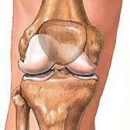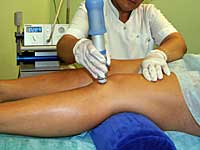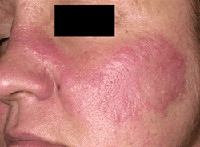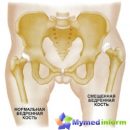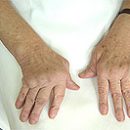What is a kinbeck disease? What are the symptoms of kinbeck disease? How to diagnose the disease and treatment? Answers to these questions you will find in the article.
Content
Kinbeck's disease
As a result of a constant microtraumamum of tissues, a partial or complete violation of the blood supply to the affected area of bone tissue is developing with the occurrence of small hemorrhages, as a result of which the dye is broken and its partial resorption occurs,.E. Remaining (bone loses minerals and microelements that give it strength, first of all calcium and phosphorus salts). With the continuation of the professional load or when it is increasing, repeated, although minor, damage to soft tissues lead to the defeat of the periosteum, cartilage to the edges of the bone. All this creates the conditions for the development of aseptic subchondral (t.E. subprove) focal necrosis of the serunuous bone, which leads to its disintegration on separate elements (to fragmentation), and then to flattening. The shape of the bone changes. A certain role in the occurrence of this pathology has consecutive minor injuries that contribute to the emergence of intraoscience. In the future, subject to the continuation of the physical activity on the bone area, the pathological process becomes more pronounced, which leads to the formation of compression fracture and deformation of the bone.
Symptoms of Kinbeck's disease
 The disease is characterized by a gradual and sufficiently slow development and a long flow. The symptoms of this disease are pretty peculiar. Initially, pain, pulling nature in the field of rays-toll joint, increasing during work or after it. After a few months, and sometimes a year later, swelling is found in the field of rays. At work from ordinary muscle tension, push or movement occurs relapse of pain with the appearance of swelling on the back of the wrist. However, all phenomena disappear as soon as the worker stops loading the hand. In the future, the recurrence of pain in the field of ray-taking joint again appears subject to the continuation of work. The movement in the joint is becoming increasingly limited and painful. Pressing on the area of the projection of the semi-lobster is quite painful.
The disease is characterized by a gradual and sufficiently slow development and a long flow. The symptoms of this disease are pretty peculiar. Initially, pain, pulling nature in the field of rays-toll joint, increasing during work or after it. After a few months, and sometimes a year later, swelling is found in the field of rays. At work from ordinary muscle tension, push or movement occurs relapse of pain with the appearance of swelling on the back of the wrist. However, all phenomena disappear as soon as the worker stops loading the hand. In the future, the recurrence of pain in the field of ray-taking joint again appears subject to the continuation of work. The movement in the joint is becoming increasingly limited and painful. Pressing on the area of the projection of the semi-lobster is quite painful.
In pronounced cases, the symptom of the Finteraster is noted: when the brush is compressed in the fist, the head of the III-th methol bone is at one level with the heads of the II-th and IV-th psyat bones, and not towards them, as is observed normally.
A sharp pain causes a head-down head and along the axis of the middle cuff, especially when compressing the brush in the fist. These phenomena significantly limit the function of the hand, especially with a long-flowing disease. At the same time, restriction of mobility of the palm, violation of the rear and palm bending of the brush.
Subsequently, in cases of a launched disease, atrophy of the muscles of the forearm of inactivity can develop, in which the reduction of muscle mass and the reduction of muscle strength is observed.
Diagnosis of Kinbeck's disease
A radiographic study is determined in diagnosis. In the early stages of the disease on radiographs, a change in the structural picture of the semi-lobby is noted: the shadow of it becomes more intense compared to the shadow of the adjacent wrist bones.
In the future, x-ray is determined by its deformation, flattening along the longitudinal axis and shortening in the diameter. Bone contours are uneven; In the center, the sections of enlightenment are determined that correspond to the zones of dissolving zones. The narrowing of the articular gap is often noted as a manifestation of non-specific inflammation in the articular gap and the phenomenon of deforming osteoarthrosis.
Treatment of Kinbeck's disease
Long immobilization - imposition of circular gypsum bandage on the area of ray-taking joint for up to 1 month, Novocaine blockades, mud, paraffin therapy, hydrogen sulfide baths. Operational treatment (scraping of necrotic masses, excision of the affected bone) is not always effective.
Full cure and restoring the functions of the bearer joint are rarely observed.


